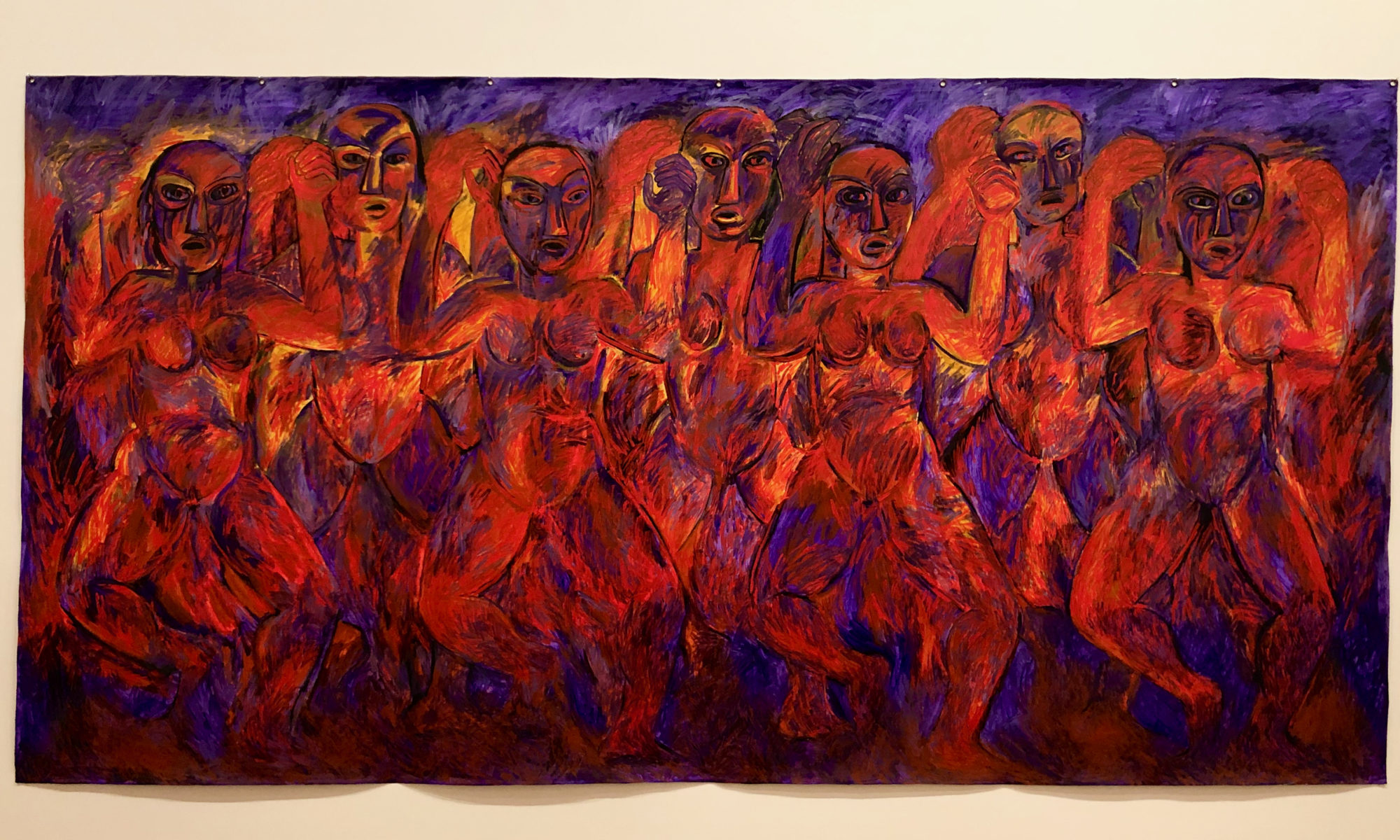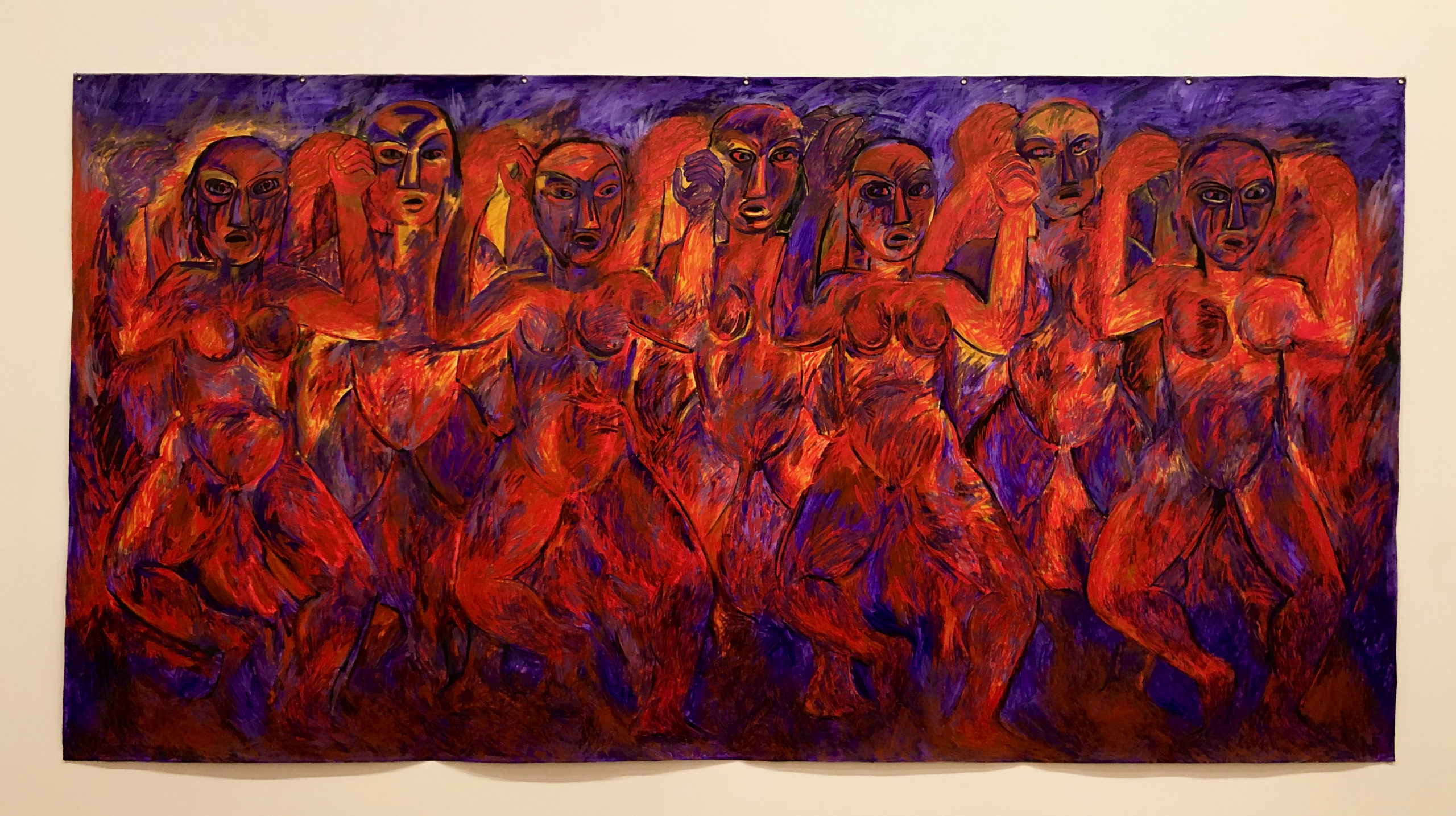I am looking through my photos and found some recent gallery pics I love — here is one Tena I Ruia 1987
A painting for our time!!
If you are on a big screen – right click to get full Image in next tab.
From Wikipedia:
Robyn Kahukiwa (born 1938) is an artist, award-winning children’s book author, and illustrator from New Zealand. Kahukiwa has created a significant collection of paintings, books, prints, drawings, and sculptures.
Kahukiwa was born in Sydney, Australia in 1938. She trained as a commercial artist and later moved to New Zealand at the age of nineteen.
Part Māori on her mother’s side, Kahukiwa is of Ngāti Porou, Te Aitanga-a-Hauiti, Ngāti Hau, Ngāti Konohi and Whanau-a-Ruataupare descent.



